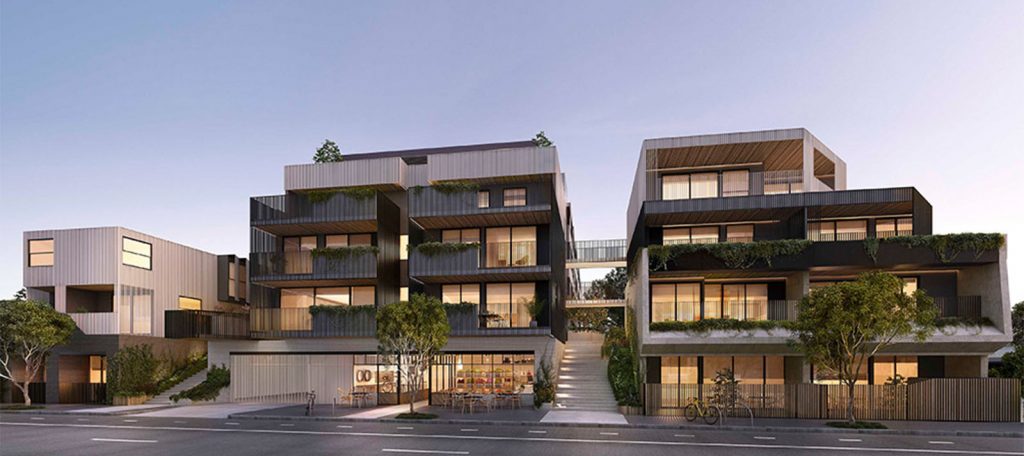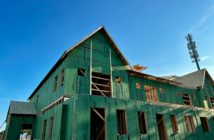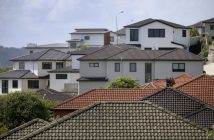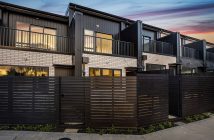An Australian developer has come up with an innovative idea that could help ease New Zealand’s chronic housing shortage

Impeded by an uninviting property tax landscape, the build-to-rent sector has been stagnant in Australia despite the increasing viability of the model as home ownership rates continue to plunge.
More than 40% of Australians now rent by choice and the proportion of households in the rental sector now equals the number of dwellings owned outright, The Urban Developer reports.
But few developers have entered the market due to tax constraints, planning concerns and uncertainty surrounding legislation.
Melbourne developer Kris Daff is the latest to bridge the gap, launching a new model which he says is a direct response to multi-level government policies on housing affordability.
Daff is the managing director of Make Ventures and Assemble, which is backing the new hybrid model that aims to overhaul the conventional off-the-plan development model.
Unlike other programs, the “Assemble Model” provides incoming residents with rent stability, transparency on price, financial coaching and community services to support a “path to home ownership” with an option to buy their apartment at the end of a five-year period.
“The Assemble Model is the culmination of three years of research, both locally and overseas – and applying these learnings to the Australian context,” Daff says.
ANZ is supporting Daff’s first project, approving the development and investment facility for 393 Macaulay Road in Melbourne’s Kensington.
The big bank will provide construction funding without the usual pre-sale requirements for the $60 million, 73-apartment development.
The model has been refined by industry leaders KPMG and Arnold Bloch Leibler.
“What excites me in particular about the Assemble Model is a greater alignment of interest between the developer and resident compared to the off-the-plan model,” Assemble Design Director Quino Holland says.
“We have to deliver high-quality buildings that age gracefully and foster a genuine community.”
Project leaders have also acquired equity for its first three major projects and discussions are progressing with superannuation funds to become the medium to long-term capital partner for the business.
The project, if successful, is sure to gather mainstream attention with property aficionados around the nation keen to identify the necessary formula to establish a sustainable build-to-rent sector.
How does it work?
Residents sign a 5-year lease with the option to purchase their home for a fixed price at the end of the term.
The purchase price is agreed up front and is calculated as the current price with fixed 1.75% increases per year over 7-years (2 years of construction + 5 years of leasing).
The lease and option to purchase is secured by paying a refundable amount of 1% of the purchase price prior to the start of construction (e.g. $5k for a $500k apartment).
Over the 5-year lease period, residents are supported with not-for-profit financial coaching services and bulk-buying initiatives to leverage economies of scale.
After five years, residents can exercise the option to purchase the property at the fixed price, with the 1 per cent refundable amount contributing towards the purchase price.
“By locking in the price today, you are protected from rapid property price increases,” Daff says.
“You have seven years to save towards your deposit and five years to see if your home lives up to your expectations.
“Get to know your home, your neighbours and community before you decide to buy, and you can exit the lease or not proceed with the purchase at any time.”
Assemble put these ideas into practice through its first development in partnership with Wulff Projects and Icon Developments in Roseneath Street, Clifton Hill, comprising 48 apartments and 18 townhouses.
Some 80% of homes sold on the first day of sales, 95% to owner-occupiers, reinforcing an eagerness in the market for buyers to be assured of stability in long-term housing and community potential.
Roseneath Street also received the 2016 Victorian Premier’s Design Award for excellence in Service Design and construction for the project is on track for completion in August 2018.
Not to be outdone, New South Wales will be the first state to fund a dedicated build-to-rent model after Minister for Social Housing Pru Goward revealed that a Communities Plus housing site in Redfern would be home to the nation’s first build-to-rent housing model.
The Redfern site has been nominated as the location for the development of the government’s affordable housing model, which will integrate social housing with housing supply for the broader community.
South African-listed Investec registered interest in the 600-660 Elizabeth Street site with the NSW Communities Plus programme in April.
Investec was the first developer to flag interest in the expensive New South Wales market after completing a “rent-then-buy” affordable housing project in Adelaide for 86 dwellings.
The NSW government’s model allows the state to retain valuable state-owned land while investors build and manage the site under a long-term lease.
“Under this innovative approach, we are able to provide government-owned land to investors under a 40-year lease and at the end of the term, the asset is retained by the government,” Goward said.
It is expected that the NSW government will de-risk the project by supporting a planning approval that provides the amount of floor space that will be required to make the project financially viable.
Under a private-public model, it is likely that 70% of the houses will be market housing with the remainder allocated for social and affordable housing.
Over the next 12 months, an expression of interest and request for proposal process will be carried out to appoint a development partner for the site.
The $22 billion NSW Communities Plus program expects to deliver 23,000 social and 500 affordable homes by 2026.



